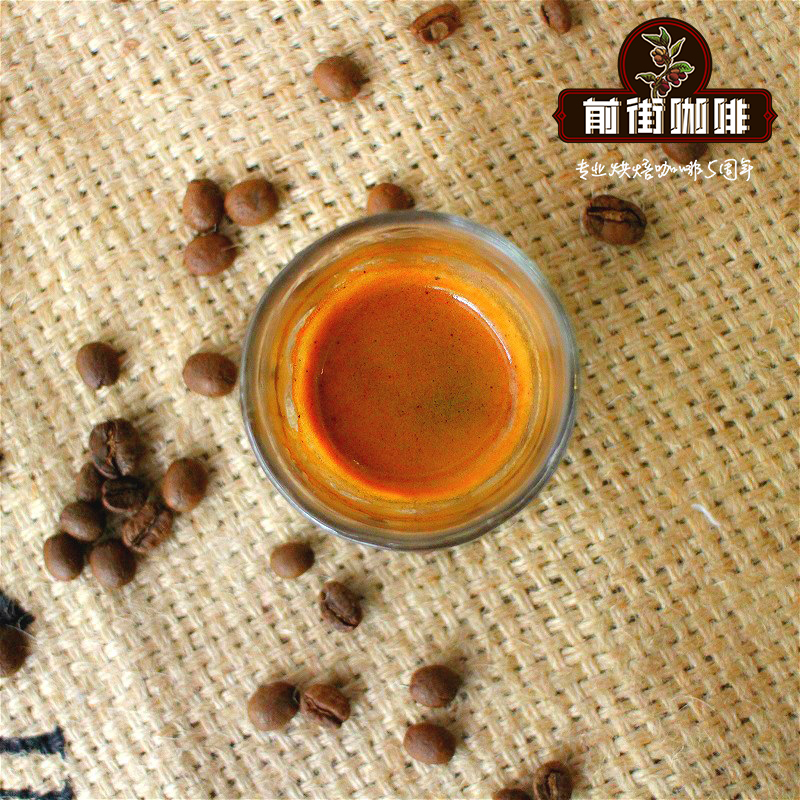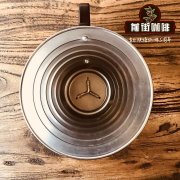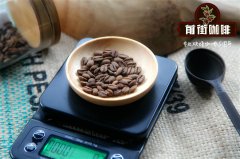Starbucks single-origin San Igna coffee bean story _ how much is the price of Peruvian coffee

Professional coffee knowledge exchange more coffee bean information please follow the coffee workshop (Wechat official account cafe_style)
Starbucks ®
Single origin series
Guatemala, Peru, San Igna coffee beans.
PER Interface SAN IGNACIO
Latin America
With the flavor of thyme and violets, dark chocolate-like tail rhyme
Deep baking
Thick and full-bodied
Processing method (washing method)
Acidity: medium
Alcohol: medium
Match with food
Taffy, chocolate, caramel
Coffee variety
100% Arabica coffee beans
The geographical producing area is the embodiment of flavor.
Latin America
Fresh and lively acidity with aromas of nuts, cocoa and soft spices.
Coffee growing areas in Latin America include Mexico and countries in Central and South America. This is an extremely important area for Starbucks. In 2009, Latin America accounted for more than half of our total coffee purchases. Coffee from this area is often referred to as "washed" coffee and is generally processed by fermentation to form a flavor. We purchase washed coffee mainly because of their consistent taste and quality, and use them as the basis of our favorite comprehensive coffee. Latin American coffee tends to have a balanced flavor of cocoa and nuts as well as fresh and comfortable acidity.
The processing method will affect the overall flavor of coffee.
Washing method
Water washing helps to improve the acidity or aroma of coffee and gives it a soft and refreshing aftertaste.
As the name implies, this method mainly depends on the use of water. This is especially true when the mucus layer is dissolved in a large water tank during fermentation. As a result, cleaner coffee beans and cup flavors with higher acidity can be obtained. In fact, fermentation strengthens the acidity of coffee, which is why Latin American coffee (mostly washed) is often famous for its remarkable acidity.
① collection: coffee berries will be transferred to a wet workshop where they are measured and placed in the collection tank.
② beating (de-fleshed): after the berries have been washed, they are fed into a pulp-removing machine. By rubbing, the pulp on the coffee beans can be fundamentally removed, which is waiting to be fermented, and the pulp will be collected for composting.
③ fermentation: after the pulp is removed, the coffee beans will be sent to the fermentor and fermented for 18-36 hours. In the early stages of fermentation, the enzyme breaks down the mucus so that the pulp can be removed. After fermentation, the coffee beans remove all residual mucus through the cleaning channel.
④ drying: coffee beans are dried on a drying table in a large outdoor yard, or by using a mechanical drum dryer. When drying outdoors, coffee beans need to be raked and turned constantly to ensure that they are evenly dried in the sun, a process that takes 5-7 days.
⑤ shelving: dry coffee beans are bagged and transferred to the warehouse for two months, while coffee beans continue to form flavor.
⑥ peeling: peel the coffee after shelving, the last step is to remove the peel around the outside of the coffee bean.
Fairness norms for coffee and growers
C.A.F.E. Practices
In 1988, we began to work with the world-renowned non-profit organization Conservation International (CI) to create a code of ethical procurement, namely C.A.F.E. (coffee and grower's Fair approach) Practices. C.A.F.E. Practices is a coffee procurement guideline to ensure that we purchase high-quality coffee grown in a socially and environmentally responsible manner.
Four elements of C.A.F.E. Practices:
Starbucks gives priority to buying coffee from growers and farmers who implement C.A.F.E. Practices and meet established standards in four directions of the program:
Product quality-all coffee beans must meet Starbucks quality Arabica coffee standards.
Economic responsibility-transparency is very important. Our suppliers are required to submit payment vouchers for raw (unroasted) coffee beans throughout the coffee supply chain, including receipts indicating the amount of coffee paid directly to the grower.
Social responsibility (assessed by third parties)-growers and farmers must have measures that can improve safe, fair and humane working conditions for reference. These include the protection of the rights of workers and the provision of adequate living conditions. Minimum wage requirements must be met and child labour / forced labour and discrimination must be addressed.
Environmental leadership (assessed by third parties)-in the process of growing and processing coffee, good environmental measures must be put in place to manage waste, protect water quality, save water and energy, protect biodiversity and reduce the use of agricultural fertilizers.
Third-party inspection agencies inspect farms and mills in accordance with C.A.F.E. Practicess. We work with the Scientific Certification system (SCS) to maintain an efficient and reliable inspection process.
Starbucks ®Coffee Stamps
Relevant information is excerpted into
The story of Peruvian coffee beans
Peru (Peru) is also a big coffee producer. Up to 98% of Peruvian coffee is grown in forest areas, and most producers are small farmers.
Peru has good economic conditions and a stable political situation, thus ensuring the good quality of coffee. However, there are many local problems, in addition to guerrilla warfare and drug trafficking, the emergence of cholera along the coast in the mid-1990s led to a further economic depression, and what is more, the annual inflation rate reached 7000%.
In the mid-1970s, Peruvian coffee production was about 900000 bags a year, and then steadily increased to about 1.3 million bags a year. Although private exporters buy coffee in remote areas through middlemen, the main market is still monopolized by the government. Then came the private Comera de Exportadores de Cafe del Peru, which is committed to improving the quality of coffee. Its primary task is to set standards and eliminate inferior products, thus creating an atmosphere of quality supremacy. This positive move heralds a bright future for the coffee industry. Since then, rising prices have encouraged farmers to actively grow coffee rather than cocoa, the region's traditional cash crop.
Peru's finest coffee is produced in Chanchmayo, Cuzco, Norte and Puno. Most Peruvian coffee is grown under natural conditions, but it is also difficult to confirm the cultivation of all coffee trees. Coffee grown under natural conditions costs 10% more than others. Judging from poverty, farmers may not have the money to buy chemical fertilizers and pesticides, but it is really difficult to confirm all the coffee.
The quality of Peruvian coffee is comparable to that of any kind of coffee in Central or South America. The high quality coffee produced by Peru is shipped to Germany for blending and then to Japan and the United States, which also illustrates its high standard of quality.
END
Important Notice :
前街咖啡 FrontStreet Coffee has moved to new addredd:
FrontStreet Coffee Address: 315,Donghua East Road,GuangZhou
Tel:020 38364473
- Prev

Peruvian boutique coffee beans recommended _ how to bake Peruvian coffee beans _ Peruvian coffee flavor description
Professional coffee knowledge exchange more coffee bean information Please pay attention to Coffee Workshop (Wechat official account cafe_style) Peru is the birthplace of Inca culture, here is rich in natural resources and mineral resources, while in ancient Peru there was no coffee cultivation, was introduced and planted later, due to unique natural advantages, created here unique high-quality coffee beans. 80 years of the last century
- Next

Peruvian Coffee YANESHA Yanisha Cooperative introduction _ Peruvian Alpine Coffee Taste description
Professional coffee knowledge exchange more coffee bean information please follow the coffee workshop (Wechat official account cafe_style) PERU CEPRO YANESHA Washed G1 level: G1 Origin: Villa Rica, Oxapampa varieties: Bourbon treatment: washing altitude: 1300-1700m Flavor description: honey apples, almonds, sweet taste, excellent mellow thickness and sour
Related
- Detailed explanation of Jadeite planting Land in Panamanian Jadeite Manor introduction to the grading system of Jadeite competitive bidding, Red bid, Green bid and Rose Summer
- Story of Coffee planting in Brenka region of Costa Rica Stonehenge Manor anaerobic heavy honey treatment of flavor mouth
- What's on the barrel of Blue Mountain Coffee beans?
- Can American coffee also pull flowers? How to use hot American style to pull out a good-looking pattern?
- Can you make a cold extract with coffee beans? What is the right proportion for cold-extracted coffee formula?
- Indonesian PWN Gold Mandrine Coffee Origin Features Flavor How to Chong? Mandolin coffee is American.
- A brief introduction to the flavor characteristics of Brazilian yellow bourbon coffee beans
- What is the effect of different water quality on the flavor of cold-extracted coffee? What kind of water is best for brewing coffee?
- Why do you think of Rose Summer whenever you mention Panamanian coffee?
- Introduction to the characteristics of authentic blue mountain coffee bean producing areas? What is the CIB Coffee Authority in Jamaica?

